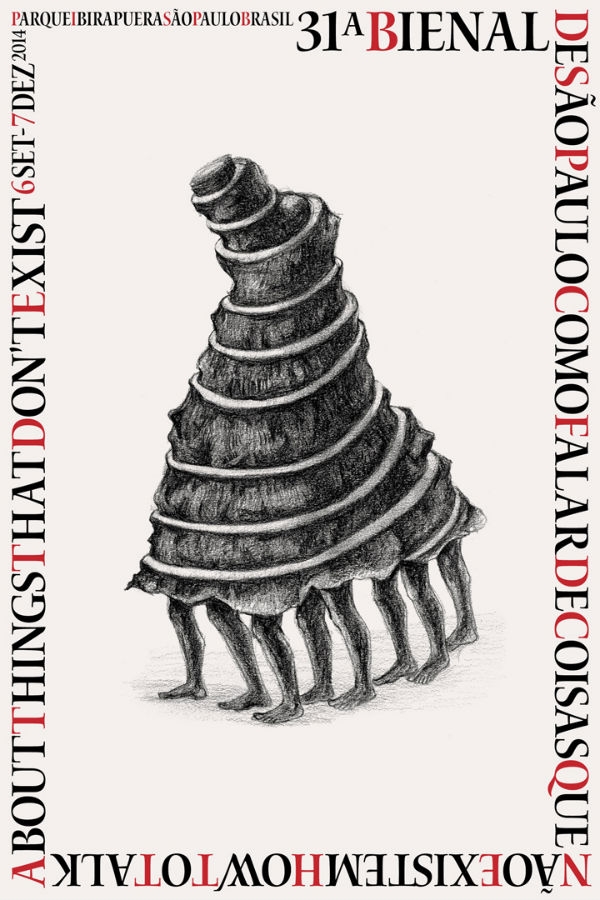As I suggested in this column last month, the growing enthusiasm for cultural boycotts against Israel was never going to stop with Western artists pledging to refuse invitations from Israeli cultural bodies, but would, sooner or later, turn to the censure of artists receiving Israeli cultural funding to exhibit abroad. No surprise, then, that the opening of the São Paulo Bienal, at the beginning of September, would become the stage for another spontaneous gesture of protest, this time involving the majority of the exhibiting artists (55 out of the 68 participating individuals and groups), in an open letter to the Bienal foundation, in which the artists demanded that the Bienal ‘refuse’ the funding it had received from Israel. ‘In accepting this funding,’ the artists declared, ‘our artistic work displayed in the exhibition is undermined and implicitly used for whitewashing Israel’s ongoing aggressions and violation of international law and human rights. We reject Israel’s attempt to normalise itself within the context of a major international cultural event in Brazil.’
After various negotiations, the protest resulted in a half-cocked compromise by which, according to the artists’ later statement, the Bienal ‘committed to clearly disassociate Israeli funding from the general funding of the exhibition. The logo of the Israeli Consulate, which was presented as a general sponsor of the event, will now only be related to those Israeli artists who received that specific financial support.’
While the weird result of this was the symbolic ghettoisation of the Israeli Consulate’s logo – ‘don’t put your dirty, bloodstained logo next to ours’ seemed to be the message – and while there’s no indication that the Bienal has actually handed any cash back, this latest example of artists and ‘cultural workers’ signing up to gestures of condemnation of Israel suggests open season on Israeli artists working or living abroad when it comes to their receiving Israeli state cultural funding, with the objective of making a ‘pariah state’ of Israel on the world stage.
As readers know, I’m against cultural boycotts in general: artists should be the last people demanding censorship (that’s what a cultural boycott is, in the end) of fellow artists, since it makes a mockery of any real commitment to freedom of expression – free speech for me, but not for you. But for those in favour of cultural boycotts, such actions are justified to indirectly punish and isolate the country in question, with artistic freedom an unfortunate, but ultimately trivial, casualty. For many, Israel’s bombings and its continued military control of the Palestinians has become a unique kind of cause célèbre, an exemplary battle of good against bad, of Palestinian martyrs and Israeli oppressors. For this sceptic, the obsessive focus on Israel seems more like a kind of narcissistic moral grandstanding by those on the outside of a conflict seeking to show themselves to be on the side of the righteous.
For sure, Israel’s dismal, unending reflex of suppression and containment of the Palestinians cannot lead to any lasting or just peace. But what disappears in the relentless focus on Israel itself is any real political awareness that the conflict is part of the bigger tensions of the Middle East, for which Western countries bear enormous responsibility, but which evade any serious scrutiny. After all among the other logos, left unmolested at the Bienal, were those of the British Council and the Institut Français – but there were no calls for boycotts of European artists at the Bienal; it seemed that those on the ‘right’ side of the debate can still separate the receipt of cultural funding from any sense of complicity with the foreign policy of one’s own government.
Of course, to subject cultural funding by any state to this kind of scrutiny would be to turn international artistic activity into an overt political battlefield. Unfortunately, in their haste to appear on the right side of the argument, and the protesters, the Bienal’s curators (Charles Esche, Galit Eilat, Nuria Enguita Mayo, Pablo Lafuente and Oren Sagiv) guilelessly managed to argue just that, declaring that the artists’ protest should be ‘a trigger to think about the funding sources of major cultural events’, while requesting that the Bienal ‘revise their current rules of sponsorship and ensure that artists and curators agree to any support that is forthcoming for their work and that may have an impact on its content and reception’.
In effect, such reasoning opens the door to the complete politicisation of all international cultural funding, in which all financial support is contestable on whatever political ground. But who would be the judge of such political ‘correctness’ (for want of a better phrase)? Those footloose, professionally stateless, nomadic curators and artists whose would-be political voices are only made audible by the massively funded platform of the art biennial?
This article was first published in the October 2014 issue.
